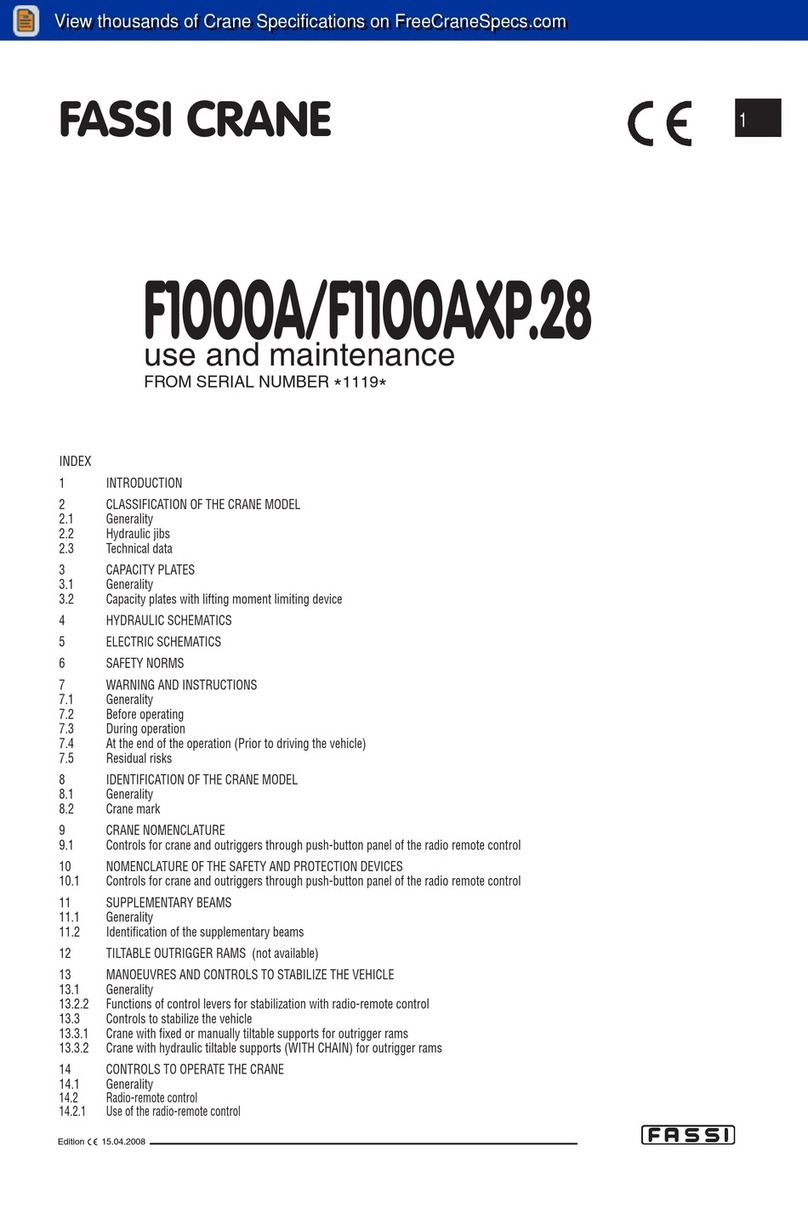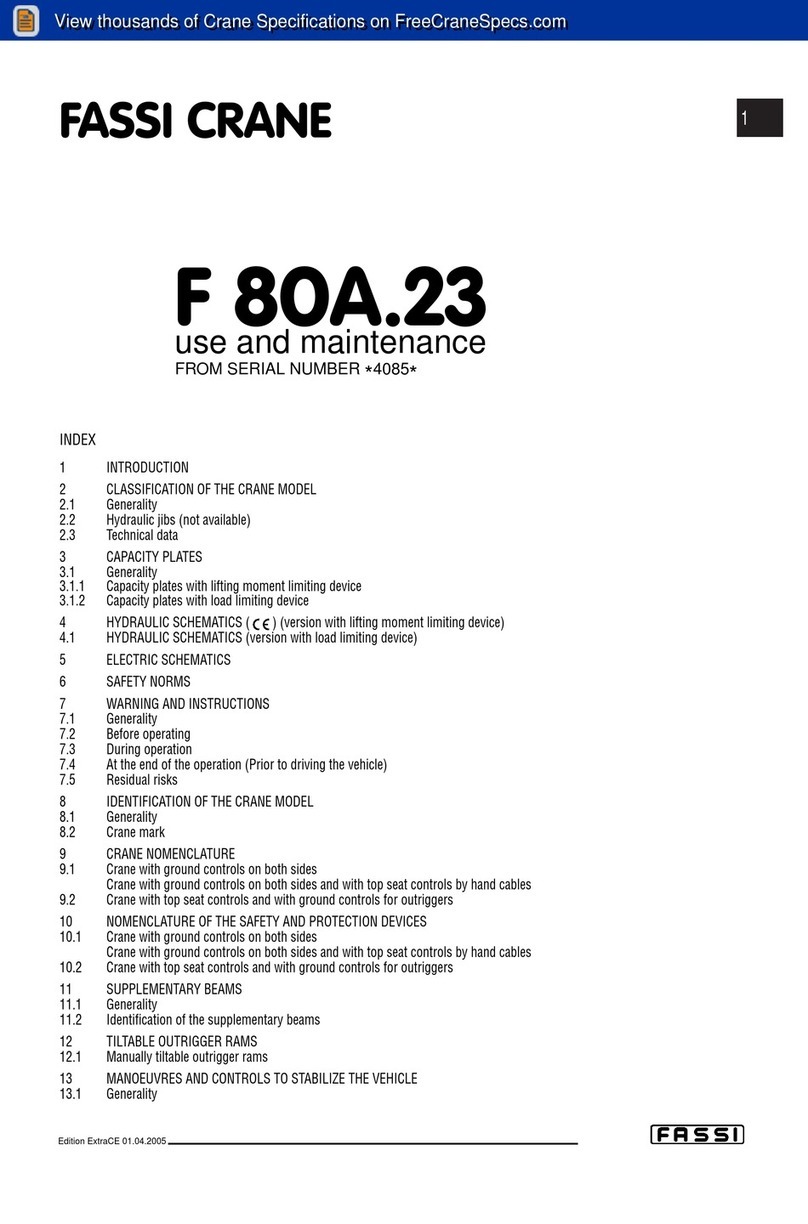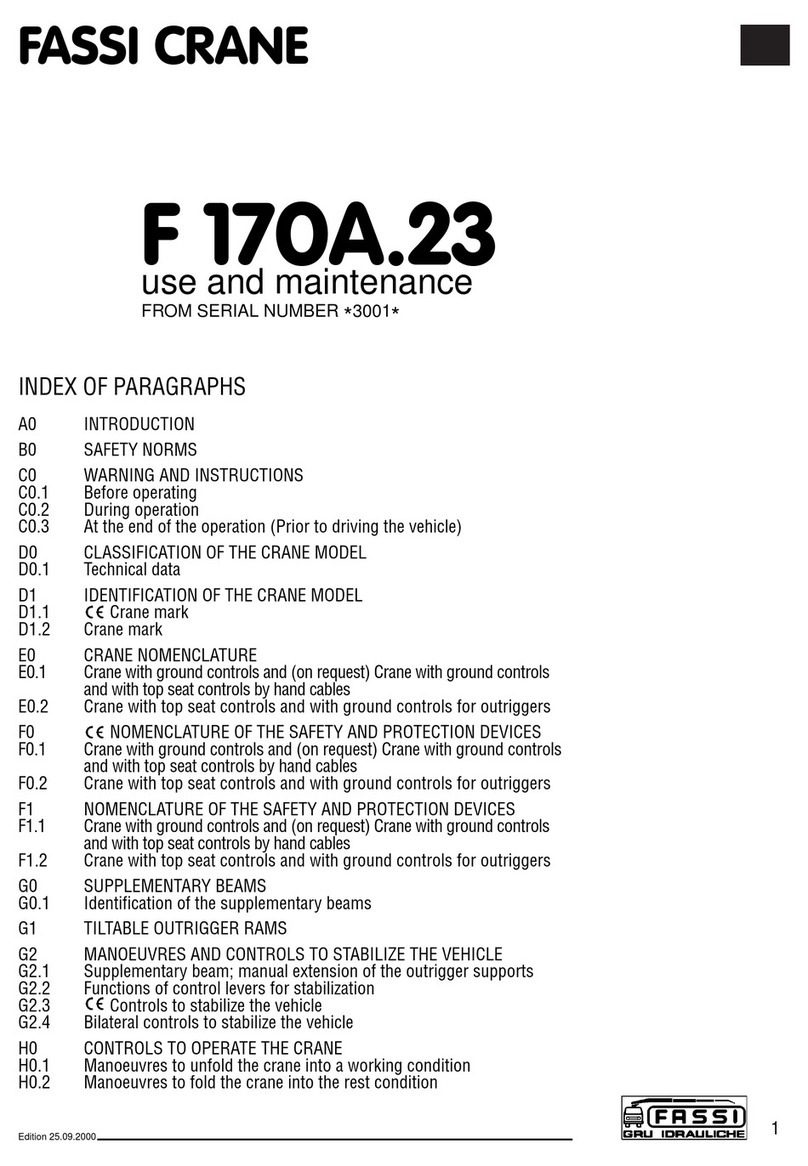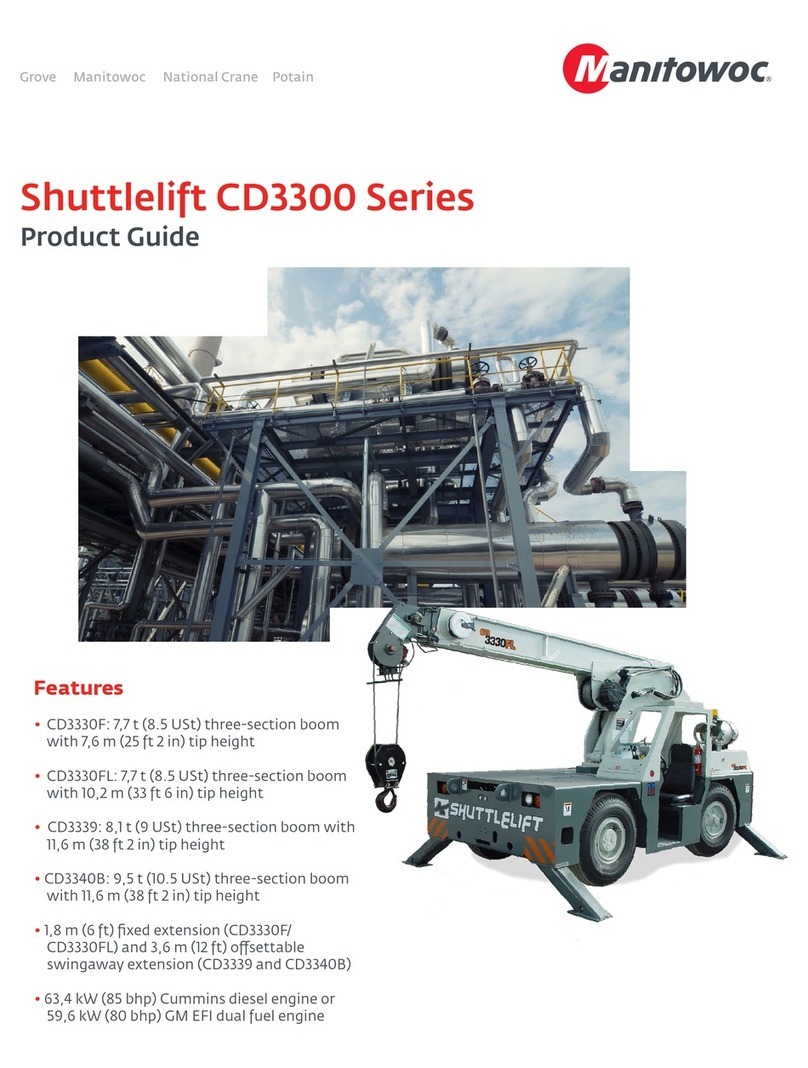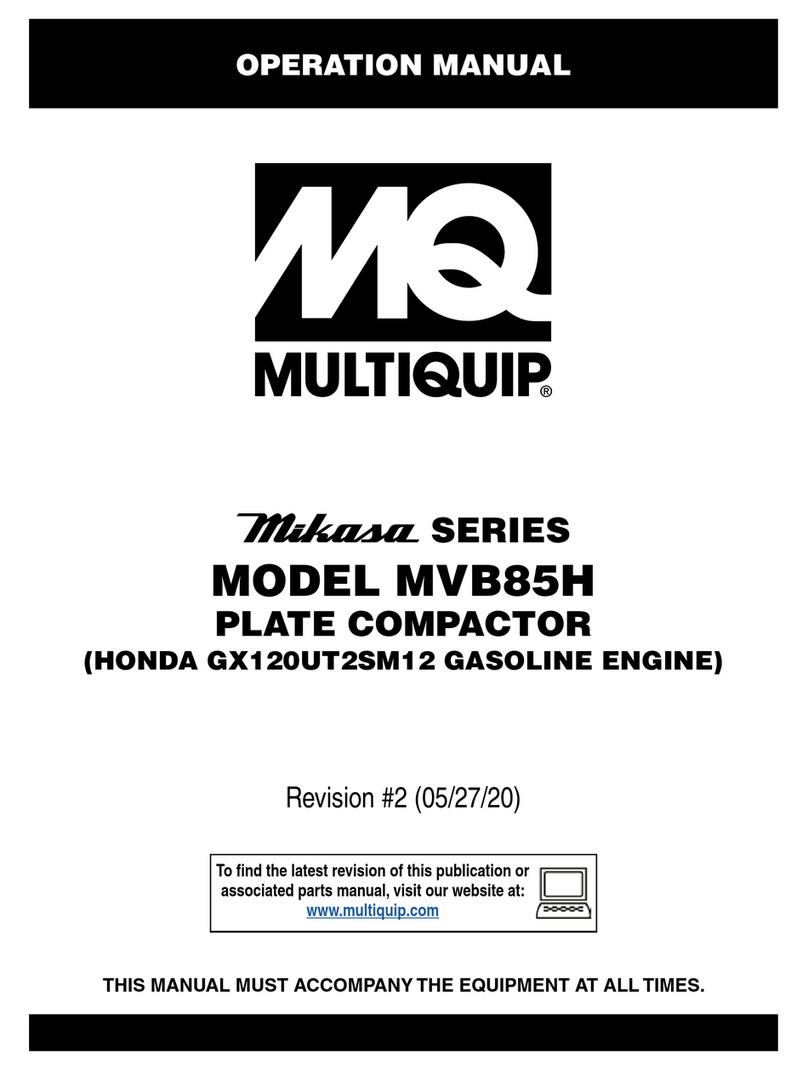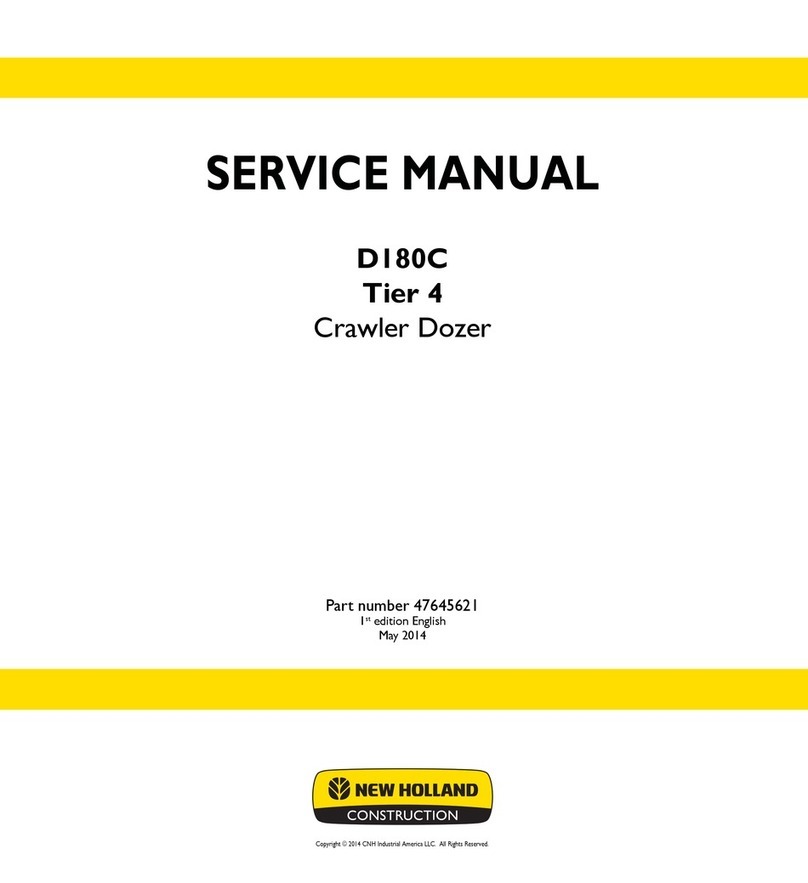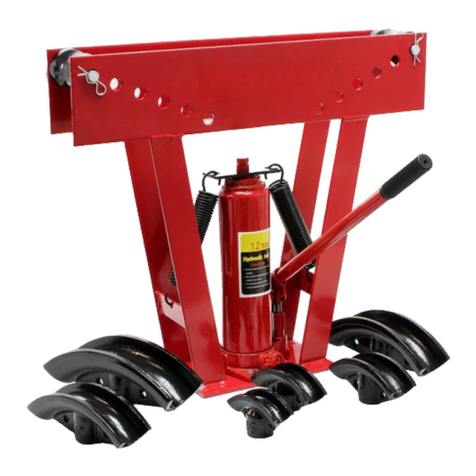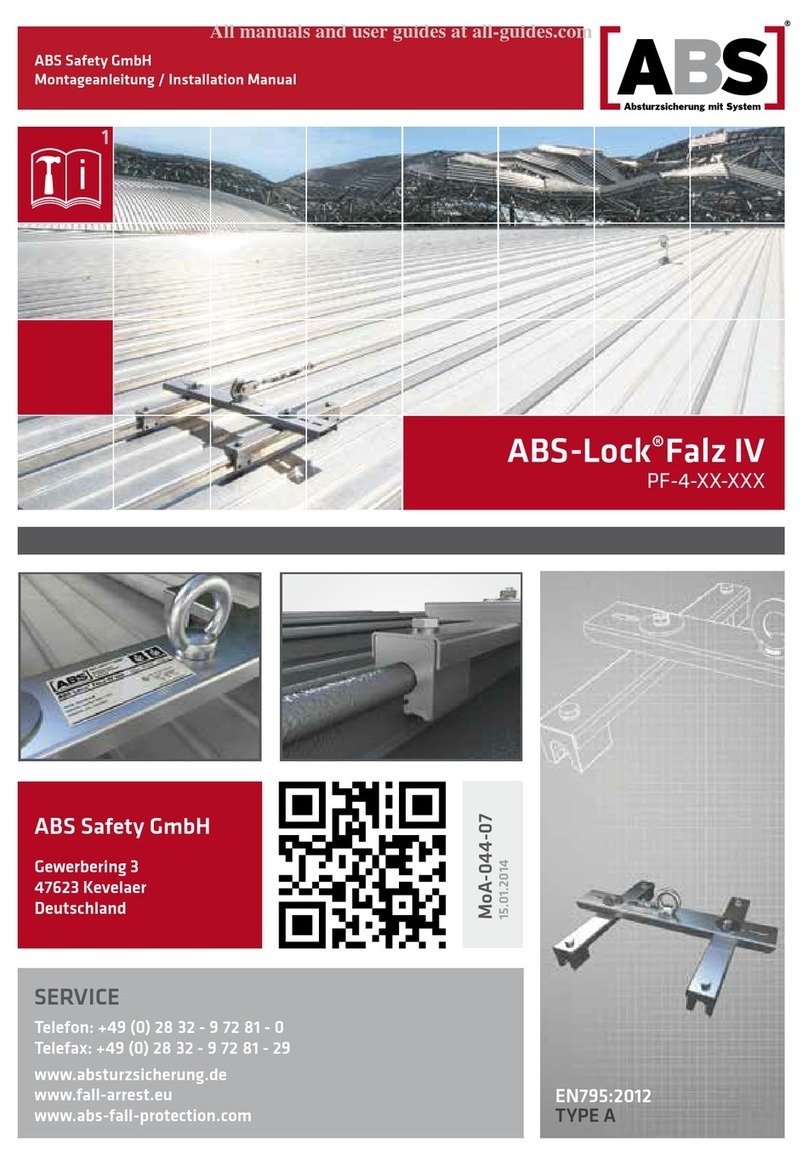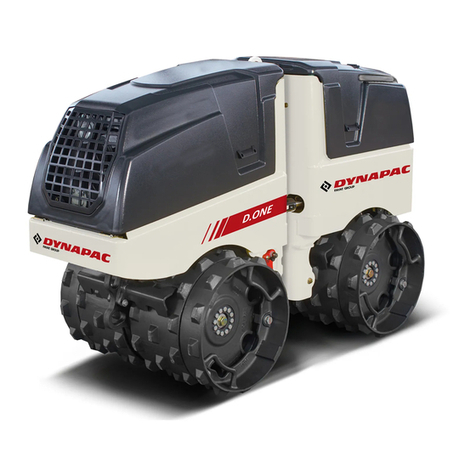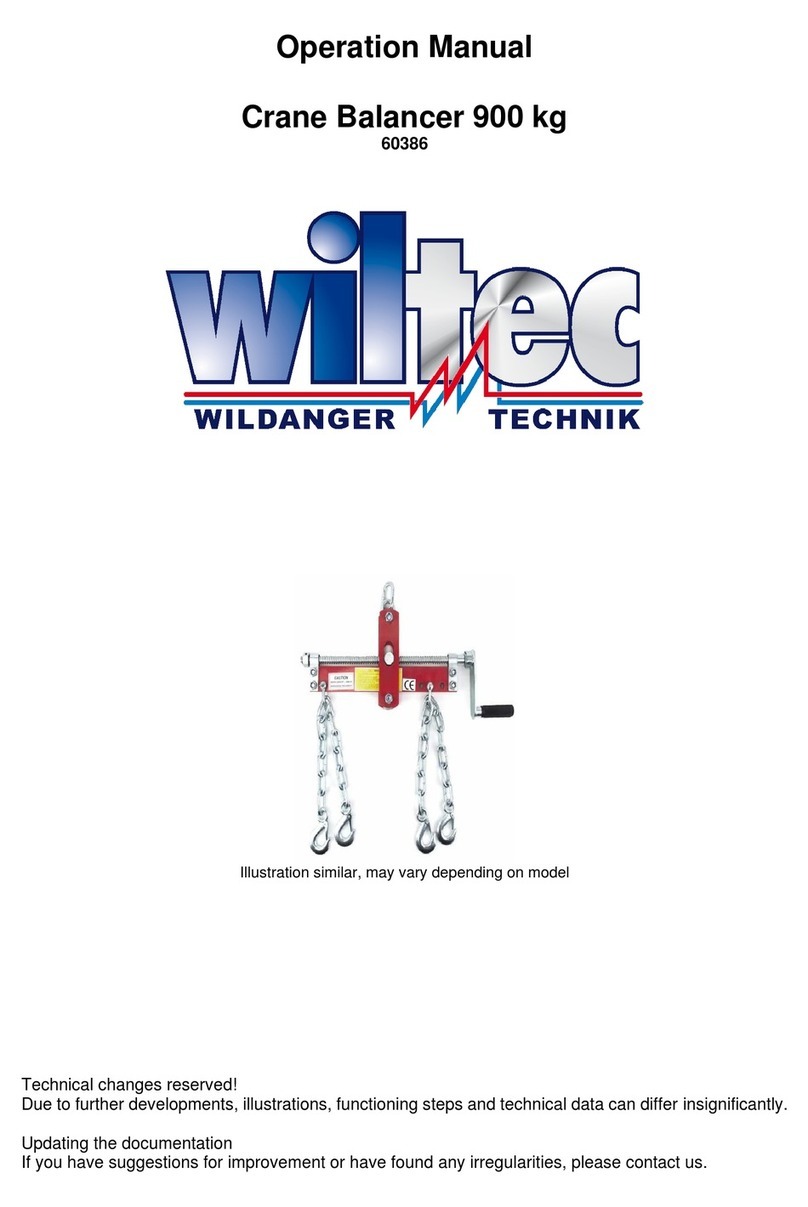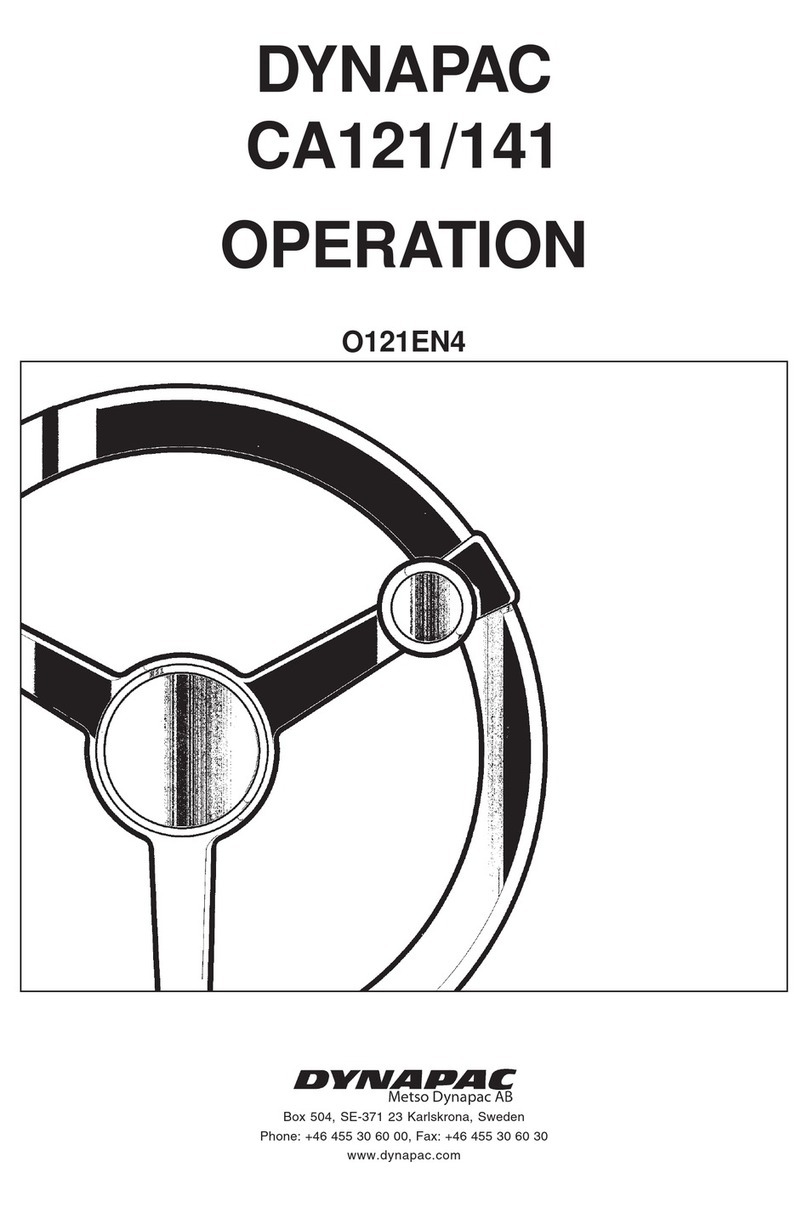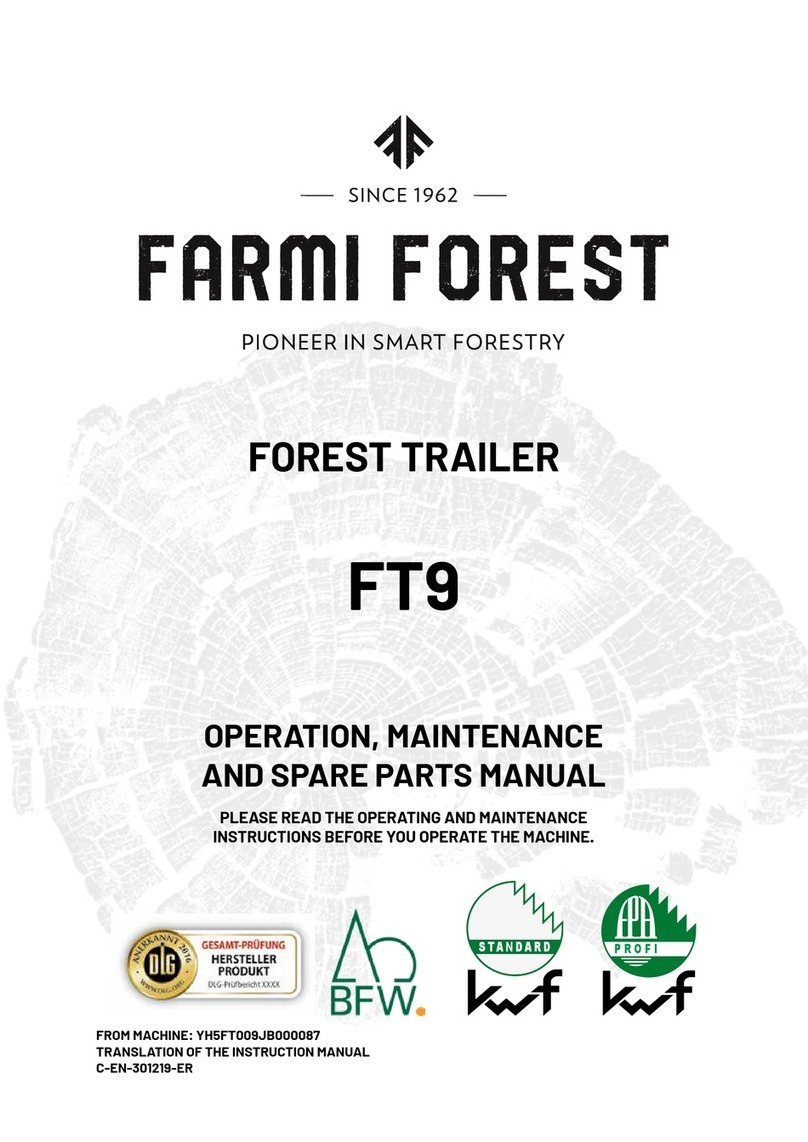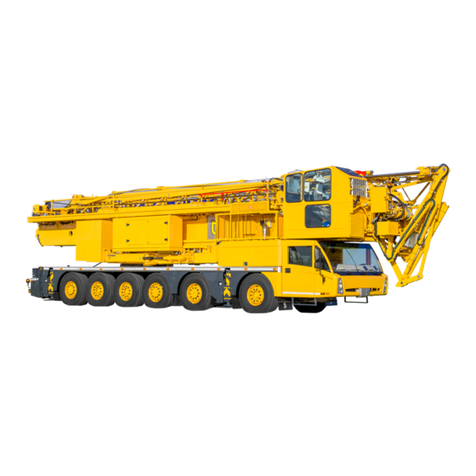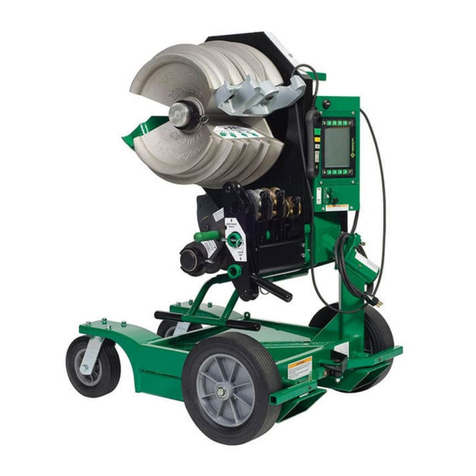Fassi F 240.24 User guide

c I
1
FASSI CRANE
F 240.24
use and maintenance
EXTRA CE version 20.04.98
INDEX
Chapter I INTRODUCTION page 2
II SAFETY NORMS page 3
III INSTRUCTIONS FOR CRANE USE page 6
IV IDENTIFICATION OF THE CRANE MODEL page 7
VTECHNICAL DATA page 8
VI CRANE NOMENCLATURE page 10
VII SAFETY AND PROTECTION DEVICES page 12
VIII LOAD LIMITING DEVICE - LIFTING MOMENT
LIMITING DEVICE (OPTIONAL) page 14
IX CONTROLS TO STABILIZE THE VEHICLE page 16
XCONTROLS TO OPERATE THE CRANE page 23
XI USE OF IMPLEMENTS page 26
XII MAINTENANCE INSTRUCTIONS page 31
XIII POSSIBLE FAULTS page 34
XIV HYDRAULIC SCHEMATICS page 35
XV OIL AND LUBRICANT CHARACTERISTICS page 38
AINSTRUCTION AND WARNING PLATES page 39
BCAPACITY PLATES page 41
View thousands of Crane Specifications on FreeCraneSpecs.com
View thousands of Crane Specifications on FreeCraneSpecs.com

FASSI CRANE
F 240.24
use and maintenance
This instruction manual describes the FASSI CRANE F240.24.
The fitment must be carried out in accordance with the instructions given
by the Manufacturer in the manual for hydraulic crane fitting.
The Manufacturer declines all responsibility and guarantee if the fitting is
entrusted to workshops without sufficient technical capability to carry out
the work in conformity.
As well as the principal safety norms, this manual contains a description
of the crane and the instructions for use and maintenance.
The crane must only be operated by responsible persons, previously
instructed and authorized.
THANK YOU FOR SELECTING ONE OF OUR CRANES.
c I
INTRODUCTION
F 240.24
2
View thousands of Crane Specifications on FreeCraneSpecs.com
View thousands of Crane Specifications on FreeCraneSpecs.com

SAFETY NORMS
( !) This symbol draws your attention on the points concerning safety.
It means: WARNING! BE CAREFUL!
IT CONCERNS YOUR SAFETY!
!ATTENTION!
READ THIS MANUAL CAREFULLY prior to use of the crane or any maintenance.
A few minutes spent now could save time and labour later.
Be sure that the unit has been installed, inspected and tested in accordance
with the local legal requirements.
Check that protections are in their place and that all safety devices are fitted
and active.
Warning plates, as well as instruction and operation plates must be repla-
ced when no longer readable or missing. (See chapters A - B)
Do not run the engine in a indoor area without first making sure there is
adequate ventilation. Fit a suitable extension tube to the vehicle exhaust pipe
to take the fumes away from the working area.
Stabilize the vehicle by means of the outrigger rams, checking that they rest
on a solid base; if in doubt use special larger outrigger base plates (available
on request). (See chapter IX)
Level the crane so as it is always operated on a horizontal plane.
Check that the taps of the outrigger rams safety check valves are closed.
Never operate the outriggers when the crane is loaded.
Remember that the stability of the unit (crane-vehicle) is only guaranteed by
the maximum lateral extension of the outriggers.
Should visibility be insufficient, make sure that control stations are properly
lighted so as to ensure safety while operating control functions and allow rea-
ding of the plates.
Before manoeuvering a load check that the
working area is adequate and properly lighted
for your crane.
Make sure that the hook is always free to rota-
te on its pin and that nothing obstructs its ver-
tical positioning.
Check the efficiency of the hook safety catch.
c II
SAFETY NORMS
F 240
3
View thousands of Crane Specifications on FreeCraneSpecs.com
View thousands of Crane Specifications on FreeCraneSpecs.com

Carefully inspect the load rigging and the
condition of ropes or chains.
Make sure that the lifted load is balanced.
The pallet fork must be connected to the crane
hook by means of a chain having at least 3 rings.
Hook up the load, checking that it does not exceed
the capacity indicated on the lifting diagram specific
to each load configuration.
It is absolutely prohibited to walk or stop under a
suspended load and for unauthorized persons to
be within the working area.
Avoid swinging the load above the control
station; in cases where the load is too close, the
crane must be operated from the opposite side.
It is absolutely prohibited to load or unload under or in proximity of electric
lines.
(!) The minimum distance
from electric lines is,
according to CEN norms,
5 meters, except for
otherwise prescribed by
national norms.
For cranes with top seat
controls, it is necessary to
use a ladder to reach the
control station.
When operating from the
top seat, stay within its
side safety guards.
SAFETY NORMS
F 240
4
c II
}3
View thousands of Crane Specifications on FreeCraneSpecs.com
View thousands of Crane Specifications on FreeCraneSpecs.com

Do not rotate the crane befo-
re the load is lifted, do not
operate with sudden
movements, activate the
controls with slow and
progressive movements.
Rotate slowly and with care
paying attention to the
stability of the vehicle.
With vertical lift, on hydraulic
and mechanical extension,
rotate slowly in order to
avoid side-skidding.
Do not move the vehicle if a
load is suspended on the
crane
.
Do not utilize the crane for
pushpull, lateral or sideways
operations.
Under no circumstances interfere with the safety and protection devices.
The vehicle/crane are not left unless the power take off is disengaged
and the load is on the ground.
At the end of the job and prior to driving the
vehicle the crane must be folded.
If the booms are to be laid on the body or on
the load, they must be blocked to prevent
possible sideways movements.
Outrigger rams must be lifted and re-entered
within the overall width of the truck and safety
devices locked.
Check that the taps of the outrigger rams
safety check valves are closed.
Disengage the power take off.
To avoid hitting bridges or tunnels check and
record the overall height of your crane in the
folded position or in laid position in the body or
on the load. Always respect and pay proper
attention to road signs placed in proximity of
such obstacles.
SAFETY NORMS
F 240
5
c II
View thousands of Crane Specifications on FreeCraneSpecs.com
View thousands of Crane Specifications on FreeCraneSpecs.com

INSTRUCTIONS FOR
CRANE USE
F 240
6
INSTRUCTIONS FOR CRANE USE
The use of the crane is reserved to authorized personnel, instructed in
advance, who has to strictly conform to the safety norms and instruc-
tions contained in the instruction manual supplied with the crane.
1 — Only authorized persons are allowed to operate the crane.
2 — The crane must be used on firm, level ground.
3 — Check that the vehicle hand brake is on and that the wheels
are chocked.
4 — Before every operation make sure that:
— no-one is within the working area of the crane
— the safety devices are in place and operative
— the minimum safe working distances from power lines are observed.
— the load is correctly slung and hooked.
5 — Stabilize the vehicle by the outrigger rams, making sure that:
— the lateral supports are fully extended
— the wheels are in contact with the ground and the suspension is not
completely unloaded
— the outriggers safety taps are closed.
6 — Use the crane in accordance with the use and maintenance manual,
making sure that:
— the load and radii are within the maximum limits shown on
the crane capacity plate
— the crane is used progressively avoiding sudden load movements
— swinging or dragging of the load is avoided
— the load is lifted before rotating.
7 — When using implements protect the crane working area with a barrier.
8 — The vehicle/crane are not left unless the power take off is disenga-
ged and the load is on the ground.
9 — Before driving the vehicle make sure that the outriggers are fully
retracted and re-entered, the safety taps closed and the crane is in
folded position.
fig. 1
c III
THESE INSTRUCTIONS FOR THE USE OF THE CRANE COINCIDE WITH THOSE
OF THE PLATE DE1771 (FIG. 1) PLACED NEXT TO THE CRANE.
View thousands of Crane Specifications on FreeCraneSpecs.com
View thousands of Crane Specifications on FreeCraneSpecs.com

IDENTIFICATION OF
THE CRANE MODEL
F 240
7
IDENTIFICATION OF THE CRANE MODEL
Essential data for the identification of the crane are given on the plate
DE2141, fixed to the base. (Fig. 2)
1—Crane model
2—Serial Number
3—Year of manufacturing
The model, the version of the crane, the year of manufacturing and the
serial number are stamped on the base (fig. 3) in the following
sequence:
*F240.22*06*0100*
( !)UNDER NO CIRCUMSTANCES SHOULD THE
DATA MARKED ON THE PLATE AND PUNCHED
ON THE BASE BE ALTERED.
It is essential to give the correct crane model and serial number, when you
contact the Service and Parts Department.
The exact crane model, serial number and description of implements will
enable FASSI Service Department to give a rapid and efficient response.
serial no.
year of manufacturing
version /.23/.24
model
fig. 2
1
2
Identification
plate
Punching
fig. 3
c IV
3
DE 2141
View thousands of Crane Specifications on FreeCraneSpecs.com
View thousands of Crane Specifications on FreeCraneSpecs.com

TECHNICAL DATA
The design of this crane has been carried out in respect of DIN 15018 norms,
fatigue test classification H1B3 .
The crane can operate, intermittently, with lifting devices other than the hook.
The dimensions and the capacity of the implements must be proportioned
with crane performances.
TECHNICAL DATA
F 240.24
8
c V
F240.24
Lifting
capacity
tm 22,0
F 240.24
Standard
reach
m 12,40
Hydraulic
extension
m 7,60
Rotation arc
400°
Rotation
torque
kNm 41,00
Working
pressure
MPa 29,0
Pump
capacity
l/min 40
Oil tank
capacity
l 120
Crane weight
kg 3200
12410 40’ 9”
4790 15’ 9”
2378 7’ 10”
1323 4’ 4”
3140 10’ 4”
*
**
+
++
SBRACCIO MAX
REACH MAX
BRAS MAX
MAXIMALE REICHWEITE
CO 1411
View thousands of Crane Specifications on FreeCraneSpecs.com
View thousands of Crane Specifications on FreeCraneSpecs.com

TECHNICAL DATA
F 240.24
9
c V
✱CON TUBAZIONI SUPPLEMENTARI
✱WITH SUPPLEMENTARY HOSES
✱ AVEC TUYAUTERIE
SUPPLEMENTAIRE
✱ MIT ZUSAETZLICHEN SCHLAEUCHEN
MASSIMA ALTEZZA SOTTOGANCIO.
HAUTEUR MAXIMUM SOUS CROCHET.
MAXIMUM HOOKING POSITION.
MAXIMALHOEHE BIS KRANHAKEN.
PESI, DIMENSIONI E POSIZIONE
BARICENTRO.
POIDS, DIMENSIONS ET POSITION
DU BARYCENTRE.
WEIGHT, DIMENSIONS AND
BARYCENTRE POSITION
GEWICHTE, ABMESSUNG UND POSITION
DES KRANSCHWERPUNKTE.
1848 6’ 1”
1848 6’ 1”
2264 7’ 5”
5960 19’ 7”
A
B
C
D
EXTRA
CO 1408
CO 1414
— MEZZERIA TIRANTI
— FIXING ROD CENTER
DISTANCE
— LIGNE MEDIANE
TIRANTS
— ABMESSUNG DER
BEFESTIGUNGSBRIDEN
M33 x 2
PESO GRU CON SERBATOIO NON RIFORNITO, STABILIZZATORI STANDARD
WEIGHT OF THE CRANE WITH EMPTY TANK, STANDARD STABILIZATION
POIDS DE LA GRUE AVEC RESERVOIR VIDE, STABILISATION STANDARD
KRANGEWICHT MIT LEEREM TANK UND STANDARDABSTUTZUNG
kg 3200
lbs 7055
F240.24
F240.24
View thousands of Crane Specifications on FreeCraneSpecs.com
View thousands of Crane Specifications on FreeCraneSpecs.com

CRANE NOMENCLATURE
—Version with ground controls for crane and outriggers
—Version with top seat controls (fig. 4a) for crane by hand cables
(optional) (fig. 4)
Pos. Description
1 — Outrigger rams
2 — Outrigger supports
3 — Base
4 — Rotation cylinders
5 — Deviator outriggers - crane
6 — Outrigger multifunction deviator
7 — Outrigger multifunction transmission
8 — Distributor bank
9 — Double control
10 — Column
11 — Inner ram
12 — Inner boom
13 — Outer ram
14 — Outer boom
15 — Booms extension rams
16 — Booms extension rams
17 — Lifting hook
18 — Oil tank
19 — Manual extensions (optional)
20 — Seat (optional)
21 — Hand-cables for crane (optional)
—Version with ground controls for outriggers and top seat controls
for crane (fig. 5)
Pos. Description
1 — Outrigger rams
2 — Outrigger supports
3 — Base
4 — Rotation cylinders
5 — Deviator outriggers - crane
6 — Outrigger multifunction deviator
7 — Outrigger multifunction transmission
8 — Column
9 — Seat
10 — Distributor bank
11 — Inner ram
12 — Inner boom
13 — Outer ram
14 — Outer boom
15 — Booms extension rams
16 — Extension boom sections
17 — Lifting hook
18 — Oil tank
19 — Manual extensions (optional)
CRANE NOMENCLATURE
F 240
10
c VI
View thousands of Crane Specifications on FreeCraneSpecs.com
View thousands of Crane Specifications on FreeCraneSpecs.com

CRANE NOMENCLATURE
F 240
11
c VI
fig. 4
fig. 5
12
21
20
7
64
2
9
10
1
1
3
8
4
2
5
18
11
13
14
16
19
17
15
fig. 4a
12
7
64
2
8
9
10
1
1
3
2
5
4
18
11
13
14
16
19
17
15
View thousands of Crane Specifications on FreeCraneSpecs.com
View thousands of Crane Specifications on FreeCraneSpecs.com

SAFETY AND
PROTECTION
DEVICES
F 240
12
c VII
SAFETY AND PROTECTION DEVICES
— Version with ground controls for crane and outriggers
—Top seat controls (fig. 6a) for crane by hand-cables (optional) (fig. 6)
Pos. Description
1 — Tap and check valve for outrigger rams
2 — Check valves for rotation control (flow regulators)
3 — Check valve for inner ram
4 — Check valve for outer ram
5 — Check valve for booms extension rams
6 — Main pressure valve (outriggers - crane)
7 — Main pressure valve (crane)
8 — Auxiliary valves (crane)
9 — Levers guard
10 — Hook safety device
11 — Safety device for outriggers supports
12 — Lifting moment limiting device assembly (optional)
13 — Parachute valves (if the lifting moment limiting device is fitted)
— Version with ground controls for outriggers and top seat controls
for crane (fig. 7)
Pos. Description
1 — Tap and check valve for outrigger rams
2 — Check valve for rotation control
3 — Check valve for inner ram
4 — Check valve for outer ram
5 — Check valve for booms extension rams
6 — Main pressure valve (outriggers - crane)
7 — Main pressure valve (crane)
8 — Auxiliary valves (crane)
9 — Levers guard
10 — Hook safety device
11 — Safety device for outriggers supports
12 — Lifting moment limiting device assembly (optional)
13 — Parachute valves (if the lifting moment limiting device is fitted)
(!) Before crane use check that safety and protection devices
are fitted and active.
(!) Under no circumstances interfere with the safety and
protection devices.
(!) Interference with the check valves and removal of the lead
seals remove the Manufacturer and invalidate the warranty.
(!) Use the ladder for the access to the top seat.
View thousands of Crane Specifications on FreeCraneSpecs.com
View thousands of Crane Specifications on FreeCraneSpecs.com

SAFETY AND
PROTECTION
DEVICES
F 240
13
c VII
fig. 6
fig. 7
13
11
11
5
7-8
12
9
6
9
fig. 6a
9
10
2
1
1
3
4
13
9
12
5
6
10
1
1
3
4
11 2
11
7-8
View thousands of Crane Specifications on FreeCraneSpecs.com
View thousands of Crane Specifications on FreeCraneSpecs.com

LOAD LIMITING DEVICE - LIFTING MOMENT LIMITING
DEVICE “INTELLIGENT TYPE” (optional)
A characteristic which permits the classification of cranes is their lifting
capacity or maximum lifting moment. The moment is defined by the
value obtained from the product of the load to be lifted (in kg) by its
distance (in meters) from the centerline of the crane rotation.
LOAD
LIMITING DEVICE
The device called “load limiting device” utilizes a small main pressure valve insered
on the safety check valves of the crane inner and outer rams and of the jib outer
ram. Whe the intervention values are reached, these valves are activated, permit-
ting the slow descent of one of the two, or both, lifting rams (or of the jib outer ram,
when fitted) and preventing use of the crane in an overloaded condition. To stop the
load descent, it is compulsory to raduce the load radius towards the column, opera-
ting the control lever to re-enter the boom extension rams of the crane (or of the
extension when fitted) or with an alternative manoeuvre which reduce the moment
on the column axis.
(!) This operation must be carried out within and not over 5 seconds
from the beginning of the load descent.
(!) ATTENTION (!)
The presence of the lifting moment limiting device does not release the user from
the obligation to respect what is indicated on capacity plates and lifting curves.
LIFTING MOMENT LIMITING DEVICE “INTELLIGENT TYPE”
(optional)
The device called “lifting moment limiting device” preserves the crane structure
from overloads, as it prevents any movement which
increases the value of the moment up to the maxi-
mum established value. This device is fitted close to
the distributor, whose specific functions it uses. It utili-
ses an electrohydraulic technology, preventing any
movement which causes an increase in the pressure
induced by the load in the inner and outer rams of the
crane (and in the outer ram for the hydraulic extension
if fitted), up to the “critical values” which have been
established in the structural test. These values, which
are non-exceedable, determine the intervention levels
and provide the data for setting the device.
The lifting moment limiting device concernes the following
manoeuvres:
— Inner boom descent; the inner boom lift is controlled
by the general main pressure valve of the distributor.
— Outer boom lift.
— Outer boom descent.
— Extension of extension boom sections.
— Winch rope lift (if fitted).
—
If hydraulic extension is fitted: extension outer boom lift.
— Extension outer boom descent.
— Extension of the jib extension booms section.
The device is based on hydraulic controls which are activated
when the intervention value is reached and block the move-
ments of the relevant distributor levers in one or both direc-
tions. Please remember that the device will return the
lever of the element being used to neutral
position.The condition of intervention is operated by
the position of the outer boom (or, if hydraulic exten-
sion is fitted, the position of the extension outer
boom), on which the electronic signal position (mer-
cury level switch) is read by a special electrovalve.
This determines the controls of the locking or
unlocking (resetting) of the controls concerned.
The crane configurations (fig. 8a-b-c) (and the eventual
hydraulic extension) indicate the manoeuvres which are allowed and not allowed
by the device, in connection with the horizontal position of the crane and exten-
sion outer booms.
LOAD LIMITING DEVICE -
LIFTING MOMENT LIMITING
DEVICE “INTELLIGENT TYPE”
F 240
14
c VIII
fig. 8 a
fig. 8 b
fig. 8 c
View thousands of Crane Specifications on FreeCraneSpecs.com
View thousands of Crane Specifications on FreeCraneSpecs.com

REACTIVATION button of crane functions in the absence of the electric
power.
(!) On the distributor it has been installed an electro-valve with a manual locking
function (fig. 9-9a) which allows to reactivate all the crane functions in case of
absence of the electric power.
Only in these conditions it is permitted to remove the lead seals which protects
the device. Push the button and turn it into the clockwise sense; the button
stays in stable and closed position.
(!) When the electric power is restablished, remember to put the button in its
original position, turning it into the anti-clockwise sense. (Fig. 9b pos.3-4)
Rubinetto esclusore di EMERGENZ
Adel limitatore
Every electrovalve is installed with a screwed tap (emergency exclusion
tap), which must only be used in case of emergency, testing or other
abnormal situations when it is not possible to carry out any of the move-
ments allowed by the device. (Such a probability generally occurs when
the extension booms are completely re-entered or the loads are conside-
rable and voluminous.) Only In these situations it is permitted to remove
the lead seals which protect the device. Slacken the lock nut of the
screwed tap fig. 10-11 (14 mm hexagonal spanner), completely screw in
the tap (5 mm allen key) and re-tighten the lock nut.
(!) ATTENTION (!)
When the operator uses this device, it means that he wishes to over-
ride the lifting moment limiting device in order to make some manoeuvres
(which would be impossible with the device active) that bring the moment
to within the level, but involve an overload condition. In such an emer-
gency condition (where the lifting moment limiting devicehas been
disabled), the operator must be:
- carefully consider the manoeuvres required to return to normal
working condtions;
- calmly and carefully assess the type and scale of the hazards
arising from these manoeuvres and the possible reaction of the
crane (tipping over, frame overload, uncontrolled fall of the load due
to a hydraulic system overload etc...);
- make all movements as slowly as possible to reduce the dynamic
overload to the minimum.
After such emergency operations and prior to re-use of the crane, you must
immediately go to FASSI authorised Center for testing the structure and
re-sealing of the device.
(!) Interferences with the valves or removal of the lead seals release the
Manufacturer from any responsibility and invalidate the warranty.
(!) ATTENTION (!)
The presence of the lifting moment limiting device does not release the
user from the obligation to respect what is indicated on capacity plates
and lifting curves.
LOAD LIMITING DEVICE -
LIFTING MOMENT LIMITING
DEVICE “INTELLIGENT TYPE”
F 240
15
c VIII
fig. 9
fig. 9a
fig. 11
fig. 10
Crane with top seat controlCrane with ground controls
Crane with top seat control
Crane with ground controls
fig. 9b
View thousands of Crane Specifications on FreeCraneSpecs.com
View thousands of Crane Specifications on FreeCraneSpecs.com

CONTROLS TO STABILIZE THE VEHICLE
The outriggers rams prevent hurmful stresses both to the frame and to the
vehicle suspensions on which the crane is mounted and assure the stability
of the unit during load handling.
Supplementary beams (optional)
Supplementary beams (supplementary outriggers) are used in conjunction
with the crane outriggers to ensure the vehicle stability during load handling.
They are hydraulically extendable.
Supplementary outrigger ram extension max.
beam code stroke interaxis
190B070 340 mm 4142 mm hydraulic extension
190B072 550 mm 4142 mm hydraulic extension
Identification data of the supplementary beam are punched on the beam (fig. 12)
in the following sequence:
Example *190B070*0001*
serial no.
identification code
! ATTENTION !
(!) The crane stability is only guaranteed by the maximum lateral
extension of the outrigger supports of the crane and supplementary
outriggers
Be very careful during vehicle stabilization operation; make sure that no one
is or transits in close proximity of the working area of the outriggers.
Check that they are applied on a solid base; the maximum plate pressure of
the rams is:
25,1 daN/cm2on a plate which diameter is 230 mm
If needed use the special base plates (on request).
When stabilization is complete the wheels of the vehicle must still be in
contact with the ground and the suspensions must not be fully
unloaded.
Level the crane so as to operate on a horizontal plane.
The crane is supplied with outrigger supports having hydraulic side
extension. (On request hydraulic extra extendable supports).
The controls to stabilize the vehicle are activated only on ground level and on
both sides of the crane base.
c IX
CONTROLS
TO STABILIZE
THE VEHICLE
F 240
16
fig. 12
Punching
View thousands of Crane Specifications on FreeCraneSpecs.com
View thousands of Crane Specifications on FreeCraneSpecs.com

(!) The controls to stabilize the vehicle are in conformity with the safety
directives and enable the operator to activate the lateral extension of the
outriggers (outrigger supports and rams) only from the side where he can
visually check the operation.
The special construction concept of the outrigger control group
which combines the functions of an 8 positions deviator with
those of a distributor segment, allows to use the control lever for
selecting and operating the supports and the outrigger rams.
- The selection (support or ram) is effected, like on a devia-
tor, by positioning the lever on the corresponding position
indicated by the function schematic (plates DE2298 and
DE2297) placed on the controls.
- The control is effected by operating the lever like on a distri-
butor; the stability of the selected position is guaranteed by
an internal device.
The extension and re-entering of the support and outrigger rams
indicated on the fig. 13-14 coincide with what indicated on the plates
DE2298 and DE2297 placed in dual side position on the base.
The symbols reported at side of each lever indicate the operating
levers in relation to their movement.
Lever function D- C
- Lever DDeviator crane - outriggers ( - E/S). Fig. 15a - 15b
- Lever CMultifunction deviator for selecting and operating the
supports and the outrigger rams of the crane as well as the
supplementary outriggers. Fig. 15-16
Control for outrigger support extension for the crane and the sup-
plementary outriggers.
- Position lever Dof oil diverter crane-outriggers
(- E/S) on E/S. Fig. 15b
- Open all the taps of the valves placed on the
outrigger rams fig. 17.
- Disengage the locking devices of the outrigger
supports by putting the levers Afrom the
position of the fig. 18 to the one of the fig. 18a.
Crane distributor side DE2298 fig. 15.
- Select the outrigger support E2 positioning the
lever Cof the multifunction deviator on E2.
- Operate the lever to extend the support E2.
- Select the outrigger ram S2 positioning the
lever Con S2.
- Operate the lever to control the ram descent
S2.
- Select the support E3 positioning the lever C
on E3.
- Operate the lever to extend the support E3.
- Select the ram S3 positioning the lever C on
S3.
- Operate the lever to control the ram descent
S3.
c IX
17
CONTROLS
TO STABILIZE
THE VEHICLE
F 240
Distributor side
fig. 13
C
fig. 15
fig. 15a
D
Double control side
fig. 14
C
fig. 16
View thousands of Crane Specifications on FreeCraneSpecs.com
View thousands of Crane Specifications on FreeCraneSpecs.com

N.B. The lever, if in other positions, does not allow any operations as a
security device keeps it in free position.
Crane double control side DE2297 fig.14-16
- Select the support E1 positioning the lever Con E1.
- Operate the lever to extend the support E1.
- Select the ram S1 positioning the lever Con S1.
- Operate the lever to control the ram descent S1.
- Select the support E4 positioning the lever Con E4.
- Operate the lever to extend the support E4.
- Select the ram S4 positioning the lever Con S4.
- Operate the lever to control the ram descent S4.
N.B. The lever, if in other positions, does not allow any operations
as a security device keeps it in free position.
(!) ATTENTION (!)
During the stabilisation operations, for each outrigger ram, it is
recommended to DESCENT the outrigger as last manoeuvre.
(!) ATTENTION (!)
The complete extension of the outrigger supports is visually indicated by
the yellow triangle which is found at the end of the beam. (Fig. 18b)
The stabilization has to be carried out with care and gradually keeping
the vehicle in horizontal levelled condition to prevent springs overloads
and chassis torsions.
After having completed the descent and stabilisation manoeuvres, close
the taps of the valves placed on the outrigger rams.
Manoeuvres for re-entry of the crane outriggers and
supplementary outriggers within the overall vehicle
width after crane use.
- Position lever Dof oil diverter crane-outriggers ( - E/S)
on E/S. Fig. 15b
- Open all the taps of the valves placed on the outrigger rams
(fig. 17).
(!) WARNING (!)
Under no circumstances put the hands on the locking devi-
ces of the outrigger supports; the device re-hook (lever A
from position of fig. 18b to fig. 18) is automatic.
Crane distributor side
- Select the outrigger ram S2 positioning the lever Con S2.
- Operate the lever to control the re-entry of the ram S2.
- Select the outrigger support E2 positioning the lever Con
E2.
- Operate the lever to control the re-entry of the support E2.
- Select the ram S3 positioning the lever Con S3.
- Operate the lever to control the re-entry of the ram S3.
- Select the support E3 positioning the lever Con E3.
- Operate the lever to control the re-entry of the support E3.
NB The lever, if in other positions, cannot be operated as a
safety device keeps it in neutral position.
c IX
CONTROLS
TO STABILIZE
THE VEHICLE
F 240
18
A
fig. 18
fig. 18a
fig. 17
fig. 15b
D:E-S
View thousands of Crane Specifications on FreeCraneSpecs.com
View thousands of Crane Specifications on FreeCraneSpecs.com

Double control side
- Select the ram S1 positioning the lever Con S1.
- Operate the lever to control the re-entry of the ram S1.
- Select the support E1 positioning the lever Con E1.
- Operate the lever to control the re-entry of the support E1.
- Select the ram S4 positioning the lever Con S4.
- Operate the lever to control the re-entry of the ram S4.
- Select the support E4 positioning the lever Con E4.
- Operate the lever to control the re-entry of the support E4.
NB The lever, if in other positions, cannot be operated as a
safety device keeps it in neutral position.
(!) Always check that the outriggers supports, once in their
rest position, are locked in their seat by the safety devices,
so as to assure the impossibility of accidental movements.
(Fig. 18)
(!) It is compulsory to close the outriggers rams valves taps
before moving the truck. (Fig. 17)
Tiltable outrigger rams (on request) fig. 19 - 19a
Outrigger rams which allow to be rested in an inclined position, when obstruc-
tions on the vehicle chassis prevent their vertical stowability. They are sup-
ports with articulation to be put between the outrigger supports and rams; the
fixed part is screwed to the outrigger supports and the mobile one to the
outrigger rams.
After the extension of the lateral outrigger supports, place the outrigger ram in
a working condition as follows:
— Remove the check pin and the locking pin from their position (fig. 19),
hand carrying the ram.
— Carefully position the ram, insert the locking pin in its new seat and secure
it with the check pin (Fig. 19a)
To re-position the rams in folded condition:
- Remove the check pin and the locking pin from their position.
- Carefully rotate the ram in a upward direction, insert the locking pin in its
new seat and secure it with the check pin.
(!) The locking pin is constructed from special material
- do not replace it with a non original part
- your security depends on it
c IX
CONTROLS
TO STABILIZE
THE VEHICLE
F 240
19
fig. 17
fig. 18b
fig. 19 fig. 19a
View thousands of Crane Specifications on FreeCraneSpecs.com
View thousands of Crane Specifications on FreeCraneSpecs.com

c IX
CONTROLS
TO STABILIZE
THE VEHICLE
F 240
20
VERSION WITH BOTH SIDES CONTROLS 01 - 09 (optional)
The controls to stabilize the vehicle are activated only at ground level and
are on both sides of the crane base.
The control of the stabilizers is operated by a special “8 functions” oil-diver-
ter. With the same lever, of the oil-diverter, it is possible to select the function
and to control the outrigger supports or the outrigger rams.
–
To select a function (outrigger support or ram) operate as on a oil-diverter
positioning the lever as indicated in the plate DE2455 and DE2456 placed
on the controls.
–
To control a lever operate it as on a distributor; an internal device of the
oil-diverter assure the positionning and the selecting stability.
The extension and re-entry of the outrigger supports and rams indicated on
the plates of the fig. 20-23 coincide with what reported on the plates
(DE2455 distributor side and DE2456 double control side) placed on the
controls on both sides of the base.
The symbols placed on the plates define the function in relation with their
movement.
Lever function D- C
–
Lever DOil diverter crane-outriggers ( - E/S).
Fig. 22 - 22a
–
Lever CMultifunction oil diverter to select and control the outrigger
support and ram application for crane and supplementary beam.
Fig. 21 - 24
C
D E/S
fig. 20a fig. 20
fig. 21 fig. 22
fig. 22a
DISTRIBUTOR
SIDE
D
View thousands of Crane Specifications on FreeCraneSpecs.com
View thousands of Crane Specifications on FreeCraneSpecs.com
This manual suits for next models
1
Table of contents
Other Fassi Construction Equipment manuals
Popular Construction Equipment manuals by other brands

GÜDE
GÜDE GRW 1811.1 TWIN Translation of the original instructions

BUFFALO TURBINE
BUFFALO TURBINE BT-CYC8KKM Original instructions and parts manual
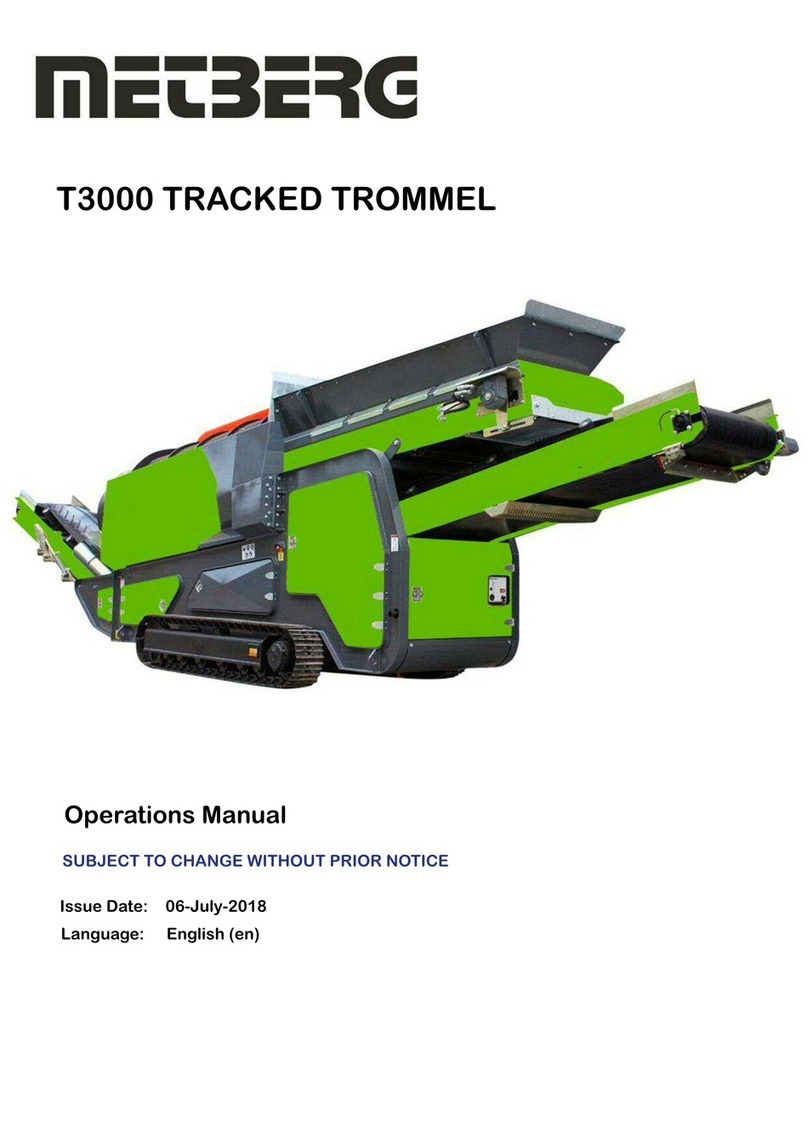
METBERG
METBERG T3000 Operation manual
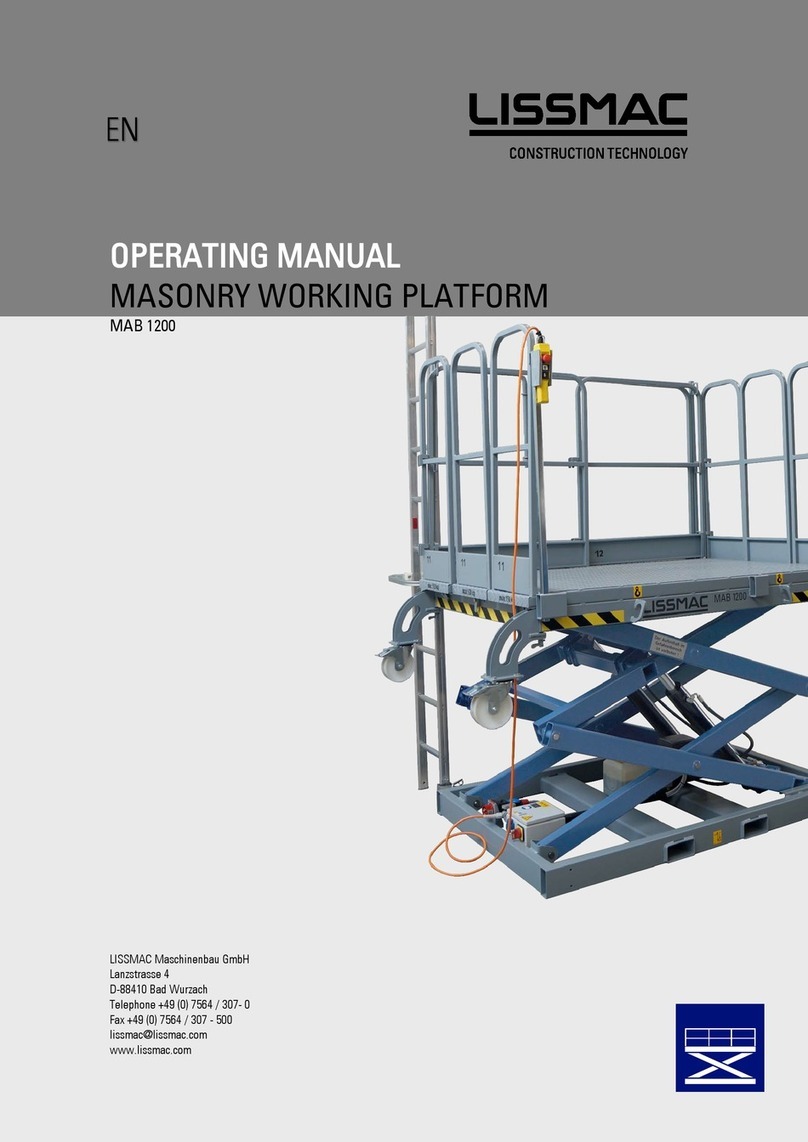
Lissmac
Lissmac MAB 1200 operating manual
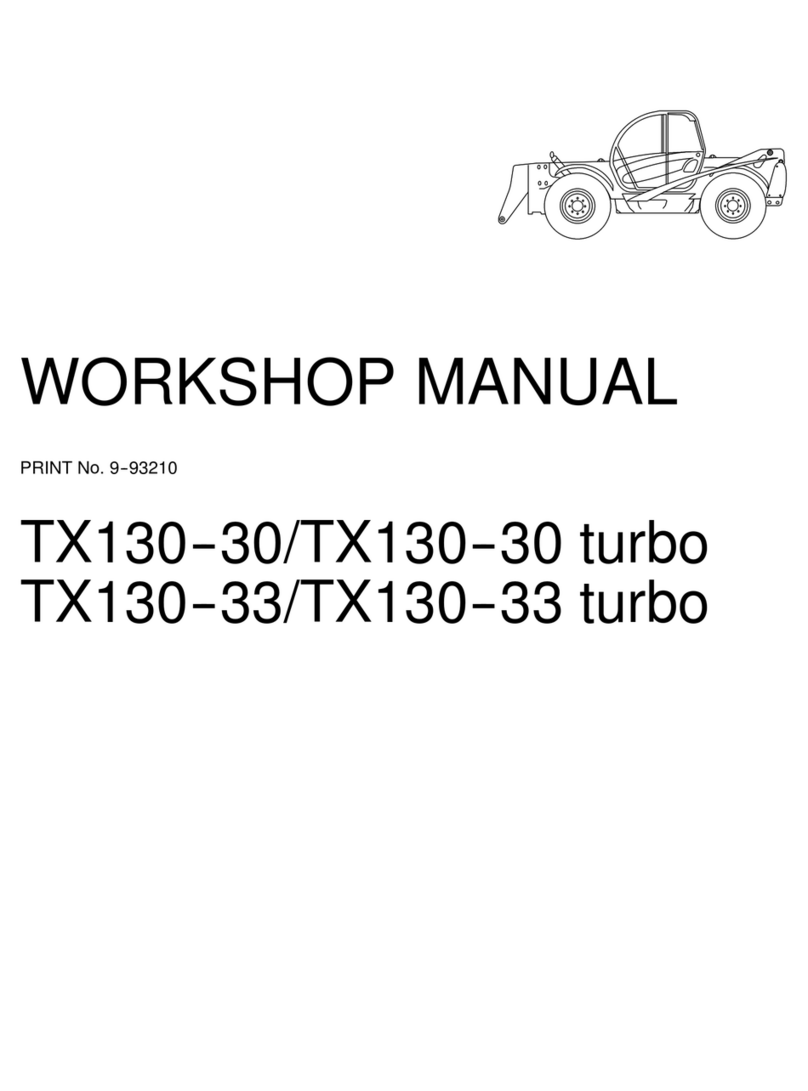
Case
Case TX130--30 Workshop manual
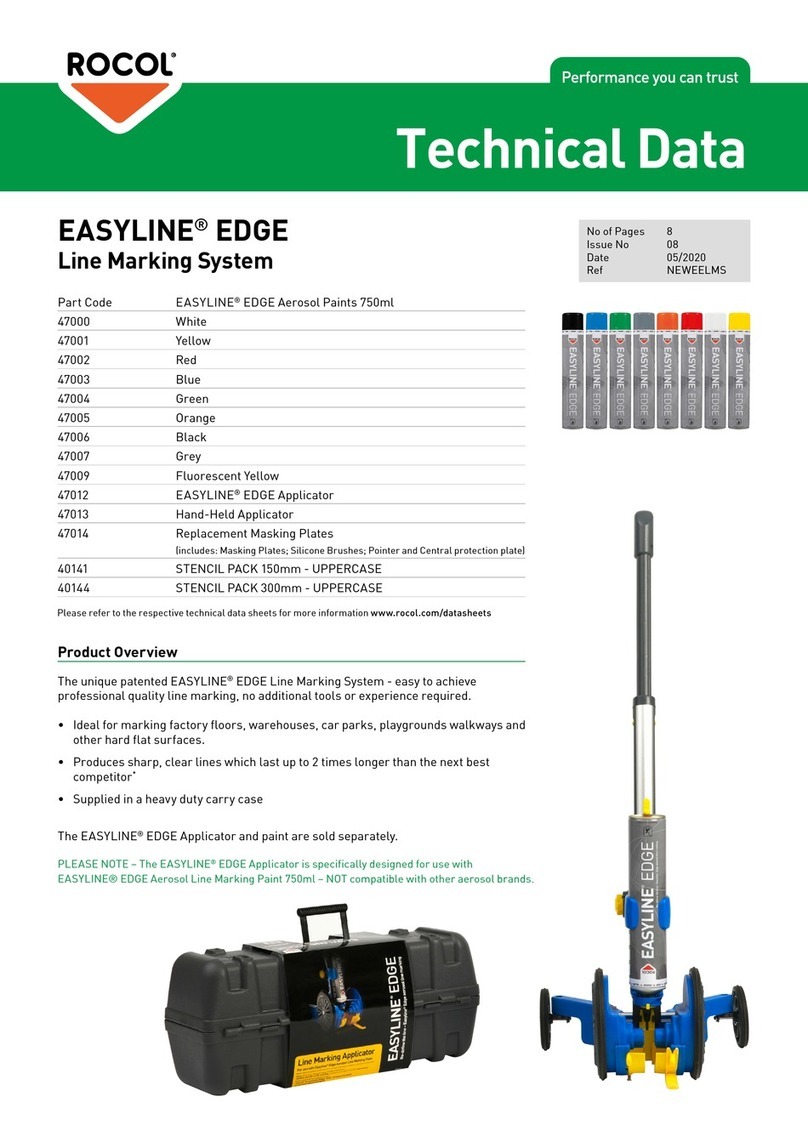
Rocol
Rocol EASYLINE EDGE Line Marking System Technical data
